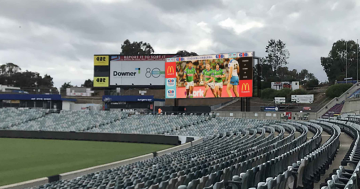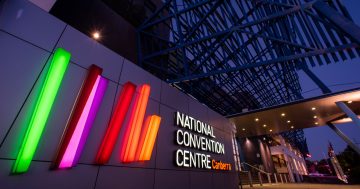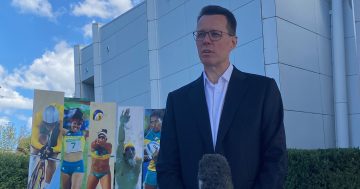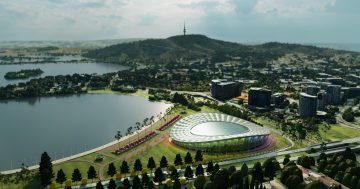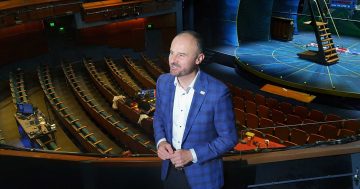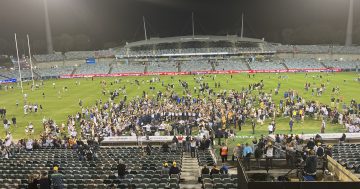
Artist’s impression of what the Civic Pool site and surrounds could have been if considered for a new city stadium. Photo: GHDWoodhead.
As late as last Wednesday, the Chief Minister was fending off arguments for the stadium to be sited in the city despite months of saying it would be in Bruce.
Canberra Airport’s development boss Richard Snow was adamant at the Canberra Business Chamber Budget Lunch that the city was the best location for the signature infrastructure project, just as Andrew Barr flagged the announcement the next day that the AIS precinct was the preferred site.
It goes to show the power of the idea, one Mr Barr also espoused at one stage only to see so many red flags that he had to change direction.
The Civic pool site was too small, contaminated, created too many traffic problems, would clash with nearby apartments and just too costly to make work, and Mr Barr wasn’t about to ignore the evidence and write a blank cheque for a facility that he said would be open for only 30 days a year.
It is now the preferred site for a new police and emergency services headquarters when the pool closes and a new complex is developed in Commonwealth Park.
Commonwealth Park was also a possible site for the stadium according to some, although it seems to be a bit of an urban myth, one Mr Barr quickly dispelled when it was put to him that the Feds were ready to foot the bill.
And he wasn’t about to embark on a project that would likely stir up a hornet’s nest of protest, not unlike what had happened in Hobart.
The project should unify people not divide them, he said.
So Bruce it is, unless there is another twist to the saga and the government has to fall back on Exhibition Park, which at least is a little closer to the city and on the light rail line.
Although it is far too early to talk about stadium design, Mr Barr ruled out a roof because it would add hundreds of millions to the cost and would not provide that much more warmth in winter.
But covered seating is another matter and will need to be a priority.
Mr Barr also indicated that a stadium would be part of a mixed-use development with its own bars, restaurants and even a hotel to support the facility and the revitalised AIS precinct that Australian Sports Commission supremo Kieren Perkins wants.
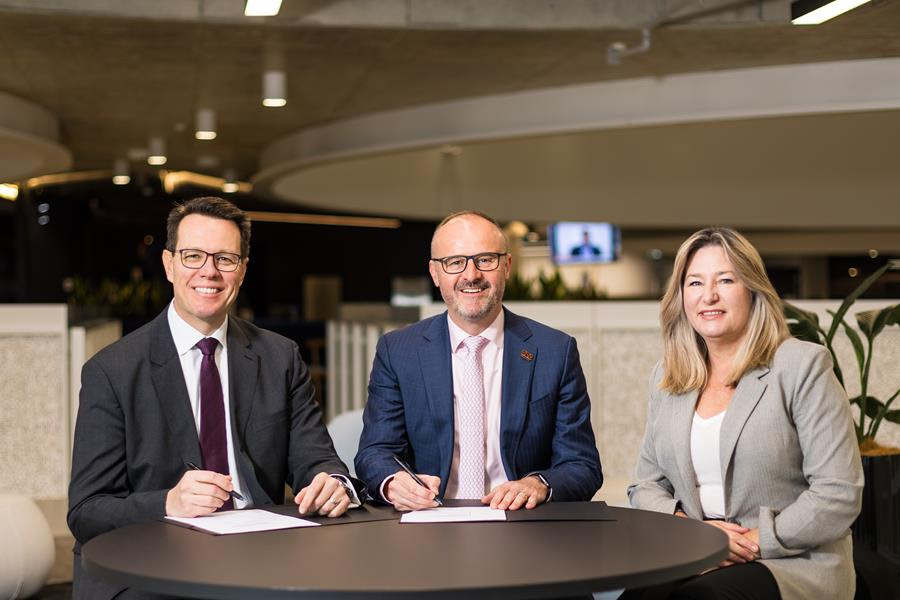
AIS CEO Kieren Perkins, Chief Minister Andrew Barr and Sport and Recreation Minister Yvette Berry at the MOU signing. The deal will hopefully drive the stadium development. Photo: ACT Government.
That relationship will be pivotal to how the stadium proceeds in the context of the wider ambitions.
Mr Barr is hoping for a joint ACT-Commonwealth deal to pay for the stadium but also believes there may be other ways to offset the cost, such as land sales, cross-subsidies from other activities around the site and memberships.
But he is looking at an economy build at $500-million-plus rather than first class, and not just to save money but to prevent the football teams and fans from being priced out of the venue.
There may be options for corporates to fit out their own suites rather than those premium facilities being included in the general build.
The other side of Mr Barr’s announcement on Thursday was what he called the elegant solution of siting an entertainment pavilion and convention centre, to be built in two stages, on the former Australia Forum land on the eastern side of the city adjacent City Hill.
The 7500-seat auditorium would provide the missing link in the ACT’s venue mix and put Canberra back on the touring circuit for major overseas performers.
The long-called-for convention centre would finally give the national capital a facility to attract the events and conferences that we are losing to other cities.
The current National Convention Centre and Royal Theatre site was considered too small for such grand plans and is likely to be redeveloped for more housing in the city.
Mr Barr sees the project as complementing the development of the nearby Civic cultural precinct, including a new Canberra Theatre.
If one includes all of the proposed developments and land releases happening in the city, one can imagine how it will take shape over the next decade.
The surface car parks are disappearing on either side of Commonwealth/Northbourne Avenues to help complete a circle of private and public buildings that will define how Canberrans and visitors work, live and play.
The Snows’ Constitution Place development sets the tone for Civic’s renewal and for some it will be a shame that a stadium, and the economic vitality it would bring, could not be part of it, no matter how much they willed it or how much the ACT’s sport-loving leader might have wanted it.












